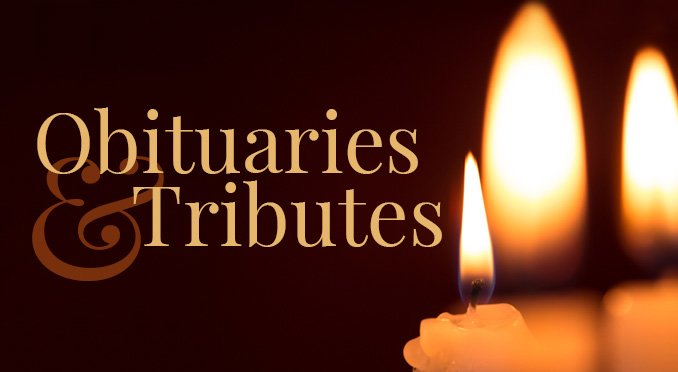
Burial Services
Traditionally, a burial service involves a visitation, followed by a funeral service in a church, funeral home, other place of worship or other facility. The casket or urn is typically present at both of these events. You have the option of having the casket or urn interred (earth burial) or it may be entombed in a crypt inside a mausoleum (above ground burial). An urn can be placed in a columbarium (if available in your area), can be placed in a specially made cemetery gravestone that holds ashes or the family may take the urn home. Family or religious traditions are often a factor for choosing burial.
Cemetery Types
Monument cemetery: A monument cemetery is the traditional style of cemetery where headstones or other monuments made of marble or granite rise vertically above the ground. There are countless different types of designs for headstones, ranging from very simple to large and complex. Erin is an agent for Heritage Memorials and will assist you with selecting the monument and design of your choice.
Lawn cemetery: A lawn cemetery is where each grave is marked with a small commemorative plaque that is placed horizontally at the head of the grave at ground-level. Families can still be involved in the design and the information contained on the plaque, however in most cases the plaques are a standard design.
Mausoleum: A mausoleum is an external free-standing building constructed as a monument enclosing the interment space or burial chamber of a deceased person or people. A mausoleum may be considered a type of tomb or the tomb may be considered to be within the mausoleum.
Columbarium: Columbarium walls are generally reserved for cremated remains. While cremated remains can be kept at home by families or scattered somewhere significant to the deceased, a columbarium provides family and friends a place to come to mourn and visit. Columbarium walls do not take up a lot of space and it is a cheaper alternative to a burial plot. Columbariums are not available in all communities.
Natural cemeteries: Natural cemeteries, also known as eco-cemeteries or green cemeteries, is a new style of cemetery set aside for natural burials. Natural burials are motivated by the desire to be environmentally conscious. of cemetery. Conventional markings such as headstones are generally replaced with a tree or a bush or a placement of a natural rock. This is something that may not be available in all communities at this time.
Burial FAQ
What is opening and closing and why is it so expensive?
Opening and closing fees include many separate services provided by the cemetery. Typically, the opening and closing fee includes administration and permanent record keeping (determining ownership, obtaining permission and the completion of other documentation which may be required, entering the interment particulars in the interment register, maintaining all legal files); opening and closing the grave (locating the grave and laying out the boundaries, excavating and filling the internment space); installation and removal of the lowering device; placement and removal of artificial grass dressing at the grave site, leveling, tamping, re-grading and sodding the grave site and leveling and re-sodding the grave if the earth settles.
Can we dig our own grave to avoid the charge for opening and closing?
The actual opening and closing of the grave is just one component of the opening and closing fee. Due to safety issues which arise around the use of machinery on cemetery property and the protection of other gravesites, the actual opening and closing of the grave is conducted by cemetery grounds personnel only.
Why is having a place to visit so important?
To remember and to be remembered are natural human needs. A permanent memorial in a cemetery provides a focal point for remembrance and memorializing the deceased. Throughout human history, memorialization of the dead has been a key component of almost every culture. Psychologists say that remembrance practices, from the funeral or memorial service to permanent memorialization, serve an important emotional function for survivors by helping them bring closure and allowing the healing process to begin. Providing a permanent resting place for the deceased is a dignified treatment for a loved one’s mortal remains, which fulfills the natural human desire for memorialization.
In a hundred years will this cemetery still be there?
We think of cemetery lands as being in perpetuity. There are cemeteries throughout the world that have been in existence for hundreds of years.
How soon after or how long after a death must an individual be buried?
There is no law that states a specific time for burial. Considerations that will affect timeline include the need to secure all permits and authorizations, notification of family and friends, preparation of the cemetery site and religious considerations. Public health laws may have limitations on the maximum length of time allowed to pass prior to final disposition. Contact us for more details.
Does a body have to be embalmed before it is buried?
No. Embalming is a choice which depends on factors such as, is there is to be an open casket viewing or if there is to be an extended time between death and internment. Public health laws require embalming for transportation of the deceased in some instances.
What options are available besides ground burial?
Besides ground burial, some cemeteries offer internment in lawn crypts or entombment in mausoleums. In addition, most cemeteries provide choices for those who have selected cremation. These often include placement of cremated remains in a niche of a columbarium or intenrment in an urn space.
What are burial vaults and grave liners?
These are the outside containers into which the casket is placed. Burial vaults are designed to protect the casket and may be made of a variety or combination of materials including concrete, stainless steel, galvanized steel, copper, bronze, plastic or fiberglass. A grave liner is a lightweight version of a vault which simply keeps the grave surface from sinking. Most cemeteries in our community no longer allow the use of wooden grave liners so families would choose to use a plastic/fiberglass or metal vault or have the option to use nothing.



